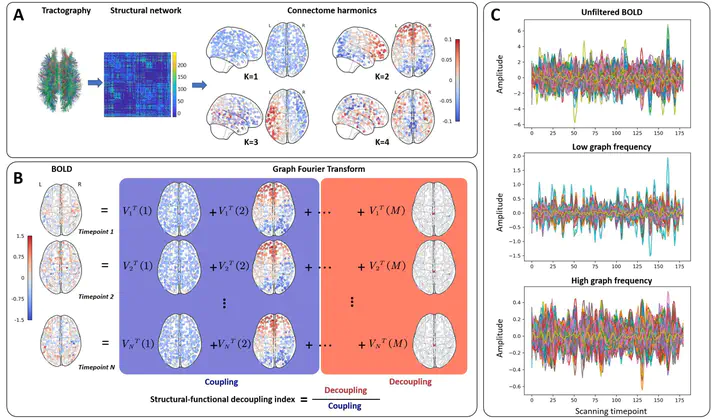Coupling of brain activity and structural network in multiple sclerosis: A graph frequency analysis study

Abstract
The brain activities and the underlying wiring diagrams are vulnerable in multiple sclerosis (MS). Also, it remains unknown whether the complex coupling between these functional and structural brain properties would be affected. To address this issue, we adopted graph frequency analysis to quantify the high-order structural-functional interactions based on a combination of brain diffusion and functional MRI data. The structural-functional decoupling index was proposed to measure how much brain regional functional activity with different graph frequency was organized atop the underlying wiring diagram in MS. The identified patterns in MS included (1) disruption of inherent structural-functional coupling in the somatomotor network (β = 0.05, p = 0.03), and (2) excessive decrease of decoupling in the subcortical (β = -0.10, p = 0.02), visual (β = -0.04, p = 0.01), and dorsal attention networks (β = -0.12, p = 0.03). Besides, this structural-functional coupling signature in the somatomotor network was associated with cognitive worsening of MS patients (β = -24.31, p = 0.006). Overall, our study unveiled a unique signature of brain structural-functional reorganization in MS.